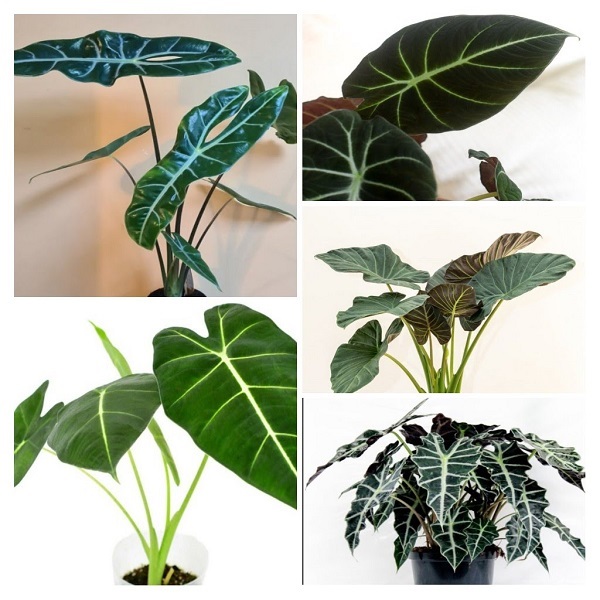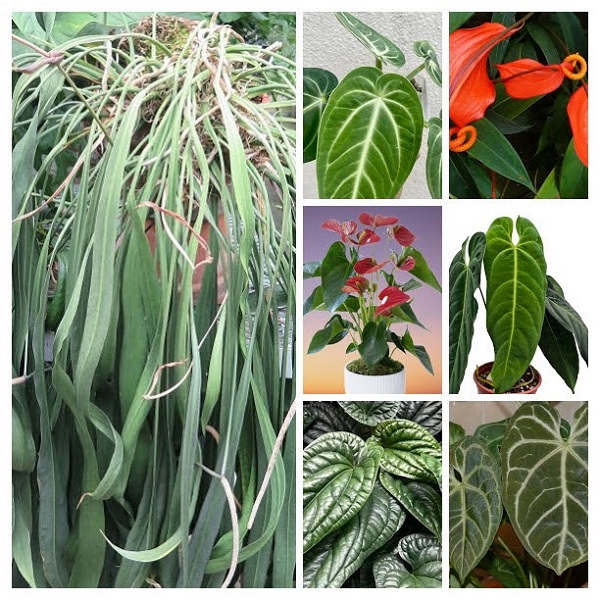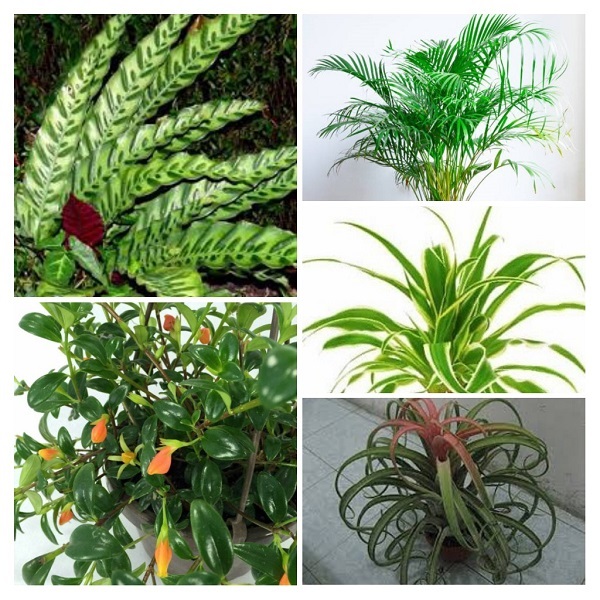How to Select the Best Houseplants for Your Home
Some links in this post may be affiliate links

To ensure that your indoor plants are always looking beautiful, careful selection is key.
Selection simply means matching your houseplants to the growing conditions in your home. If the right conditions are not present, the plants may die.
Inorder to choose the best plants for your home, you need to consider certain factors. If you fail to consider these factors, you may end with the wrong plant for your home.
We have outlined herebelow 7 tips on how to select the best plant for your home.
7 Tips on How to Choose the Best Houseplants for Your Home
When selecting perfect houseplants for your home, it is important to consider the following 7 factors to ensure that you are getting the best plant at the right cost.
1. The Light Intensity
Every houseplant requires specific conditions for optimum growth. One of the most important factors necessary for growth is light.
Some plants require more light than others. So it is important to select those houseplants that will match with the amount of light available in your home. However, it is still possible to grow any plant under Grow Lights (artificial light) if the natural light in your home is not adequate.
Houseplants can be classified into five categories based on the amount of light that they require.
a. Houseplants that grow in shade
These houseplants will thrive while well away from a window but with light enough to read a newspaper. Some houseplants in this group are Snake plant (Sansevieria sp), Heartleaf (Philodendron scandens), Aglaonema (Chinese Evergreen), Cast Iron Plant (Aspidistra elatior), Pothos, Fittonia, Baby's Tears (Helxine) among others.
b. Houseplants that grow in light shade (semi-shade)
These houseplants will do well when placed near a sunless window or some distance away from a bright window.
Some of these houseplants include Aglaonema (Chinese Evergreen), Cast Iron plant (Aspidistra elatior), Castor Oil Plant (Fatsia japonica), Hedera helix (English Ivy), Heartleaf (Philodendron scandens), Ivy tree (Fatshedera lizel), Snake Plant (Sansevieria sp), Marantas, Dracaena marginata, Dracaena fragrans, Baby's Tears (Helxine) among others.
c. Houseplants that grow in bright light but away from direct sunlight
These are houseplants that will flourish when placed on a sunless windowsill or near a bright window or a sunless balcony.
They include Anthuriums, Monstera deliciosa, Pilea, Peperomia, Spathiphyllum (Peace Lily), Spider Plant (Chlorophytum comosum), Schefflera actinophylla (Umbrella Tree), Hedera helix (English Ivy), Dieffenbachia, Bromeliads, Columnea (Goldfish Plant), Cyclamens, Begonia rex, Philodendron scandens (Heartleaf), Scindapsus (Golden pothos), Garden bulbs.
d. Houseplants that prefer some direct sunlight
Houseplants in this group will thrive when placed on or very close to an east-facing or west-facing window however they will need protection during the very hot months.
These plants include Hoya carnosa (Wax Plant), Chlorophytum comosum(Spider Plant), Impatiens, Sansevieria (Snake Plants), Poinsettia, Saintpaulia (African Violet), Plumbago, Cuphea, Cordyline terminalis (Ti Plant), Rubber Plants (Ficus elastica), Codiaeum (Crotons), Chrysanthemum, Beloperone, Nertera, Zebrina, Tradescantia.
e. Houseplants that grow under bright light
These houseplants will do well when placed on or very close to a window sill that is sunny most of the day however they may require protection during the very hot months.
They include most of the flowering houseplants like Bougainvillea, Lantana, Hibiscus, Gerbera Daisy, Pink Jasmine, Zebrina, Rosa, Nerium, Bourvardia, Pelargonium, Iresine (Bloodleaf Plant), Nerine, Heliotropium, Celosia, Coleus (Painted Nettle), Hippeastrum, Cacti and Succulents, Bedding plants.
Learn more in this guide on understanding light for houseplants.
2. The Positioning of the Plant
To get the best visual effect from your houseplants consider the background, surrounding features and colors like the wall color and wall patterns.
Wherever you have chosen to position your houseplant you need to ensure it is conspicuously displaying its beauty.
The best background for most all-green foliage houseplants and brightly colored flowers is a non-patterned, pale pastel color.
Heavily variegated leaves and houseplants bearing masses of pale blooms are best displayed when positioned against a dark background.
Large-leaved foliage houseplants will still be conspicuous against a patterned background.
Always aim for contrasts in shapes and color. To improve a background with a strongly perpendicular look, position a spreading houseplant in front of it.
3. Ease of Care and Maintenance of the Houseplant
Some houseplants are considered to be hard to kill or almost indestructible. These houseplants will tolerate a wide range of growing conditions.
Some hard to kill houseplants include Cast Iron Plant, Snake Plant, Spider Plant, Wandering Jew, Asparagus Fern, Bromeliads, Coleus, Golden Pothos, Heartleaf, English ivy, Succulents and others.
On the other end of the spectrum is the delicate group of houseplants. These houseplants require optimum growth conditions in order to flourish.
The delicate type of houseplants include Gardenia, Calatheas, Acalypha among others. These houseplants are better left to the experienced houseplant enthusiast.
4. Foliage Plant versus Flowering Plant
The foliage houseplants will keep their display value through out the year. These houseplants are grown for their spectacular foliage colors or shape of leaves.
Foliage houseplants include Monsteras, Dieffenbachias, Philodendrons, Draceanas, Ficus, Pothos, Marantas, Calatheas, Palms and many others.
The flowering houseplants are of two types. One are the flowering houseplants which after the blooms are spent, the foliage remains alive and attractive. They can be expected to live permanently under room conditions.
Permanent flowering houseplants include Flamingo Flower, Spathiphyllum (Peace Lily), Jasminum (Jasmine), Hibiscus, Saintpaulia (African Violets) among others.
The second group of flowering houseplants are the flowering pot plants. They provide temporary floral display under room conditions and are moved away after flowering is over.
Temporary flowering houseplants include Poinsettia, Azaleas, Chrysanthemums, Cyclamens among others.
5. The Shape and Size of the Plant
Houseplants can also be selected on the basis of the space available for their placement. For instance, a small low-growing houseplant will look out of place against a large bare wall while a large tree-like houseplant will look excellent in such a space.
A large houseplant will be unsafe to place on a windowsill while a small low growing houseplant will be excellent for such a windowsill.
Consider also the size the houseplant will be in a few seasons. You may buy it when young and small but in a few seasons it may be a huge tree-like houseplant.
Another consideration is the growth habit of the houseplants which vary widely. Some houseplants bear branches which grow outwards becoming wide and bushy.
The bushy houseplants include Schefflera arboricola (Dwarf Umbrella Tree), Chinese Money Plant (Pilea peperomioides), Coleus, Marantas, Begonia rex, Spider Plant and Peperomia (Radiator Plant).
Other houseplants grow upright with minimal outward spreading like Dieffenbachias (Dumb Cane), Dracaenas, Schefflera actinophylla (Umbrella Tree), Codiaeums (Crotons), Ficus benjamina (Weeping Fig), Ficus elastica (Rubber Plants) among others.
Houseplants that grow by climbing can be trained as desired. Some popular houseplants in this group include Monstera deliciosa, Hedera helix (English Ivy), Golden Pothos, Heartleaf, Passiflora, Ficus pumila (Creeping fig) among others.
The trailers can be grown as hanging houseplants with stems hanging downwards or as creepers with stems growing along the soil surface. They include Columnea, Fittonia (Nerve Plant), Helxine (Baby's Tears), Begonia pendula, Nertera among others.
Yet some houseplants bear leaves which form a circular cluster around the central growing point. They are low-growing and combine well with upright and bushy plants in a pot group. These are referred to as rosette plants and include Echeveria, Saintpaulia (African Violets), Primula (Primrose), Aechmea (Urn Plants) among others.
Ball plants are another group of houseplants under this category. These houseplants are leafless and form a distinctly global shape. They all belong to the Desert Cacti Group of plants. Examples are Parodia, Mammillaria, Ferocactus, Echinocactus among others.
6. The Safety of Children and Pets
Some houseplants are poisonous or toxic to humans and pets. If ingested they may cause various symptoms like burning in the mouth and throat, vomiting, diarrhea, nausea, abdominal pains and many others.
Other houseplants will cause skin irritation and allergies on sensitive skin when handled.
It is important to check the toxicity level of every houseplant before bringing it home. Toxic houseplants should be placed away from the reach of children and pets or avoided altogether.
Some toxic houseplants include Monstera, Cacti, English Ivy, ZZ plant (Zanzibar Gem), Caladiums, Cyclamens, Ferns, Jade Plant, Dumb cane among others.
7. The Costs Involved in Acquiring the Houseplant
The cost of a large houseplants may be higher than the cost of their smaller version. If you are on a low budget, it is advisable to buy the smaller houseplant and grow it or you can sow seeds or strike cuttings.
The easy to grow houseplants are cheaper than their unique counterparts which also require special growing conditions.
The cost of the difficult to propagate houseplants is far much higher than that of the less fussy ones. Let your budget determine your choice of houseplants.


